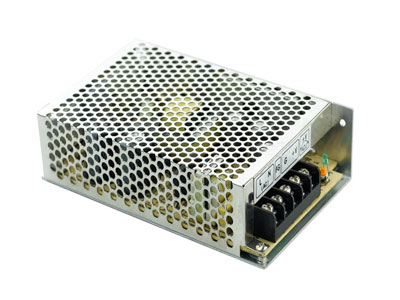Key Takeaway
No, you should not use a power supply with lower amps than required. If your device needs more current (measured in amps) than the power supply can provide, it won’t work correctly. For instance, a device needing 10A cannot be powered by a 5A power supply. This mismatch can cause the power supply to overheat or fail. Always ensure the power supply’s amp rating meets or exceeds your device’s requirements. Using the correct power supply protects your equipment and ensures proper operation.
Understanding Amperage Requirements
In industrial applications, understanding the amperage requirements of your devices is crucial. Amperage, or current, measures the amount of electrical flow. Each device has a specific amperage requirement to function optimally. If you use a power supply with lower amps, it might not provide enough current for the device. This can lead to operational issues or even damage the equipment. It’s like trying to water a garden with a trickle instead of a full stream. The device’s specifications usually include both voltage and amperage requirements. Ensuring you meet these specifications is vital for smooth operation and longevity of your equipment.

Potential Risks
Using a power supply with lower amps poses several risks, primarily that the device may not receive sufficient power to operate correctly. This can cause the device to underperform, malfunction, or fail prematurely. For example, if an industrial motor doesn’t get enough power, it might run inefficiently, causing delays and impacting productivity. When a device tries to draw more current than the power supply can provide, it can overheat, leading to potential fire hazards or damage to the power supply itself. In such cases, the risk of overheating not only endangers the device but also poses a significant safety threat to the entire operation.
Moreover, the continuous strain on both the device and the power supply can result in their early wear and tear, ultimately leading to more frequent maintenance and higher operational costs. In an industrial environment where every component’s reliability is crucial, these risks cannot be overlooked. Always matching the power supply to the device’s amperage needs is essential to avoid these risks. Ensuring the correct power supply is used helps maintain the efficiency and longevity of the devices, safeguarding the overall integrity of the industrial process.
Impact on Device Performance
The performance of your device can be significantly affected by using a power supply with lower amps. Devices designed for specific current levels may operate at reduced capacity or become erratic with inadequate power. For instance, sensors might give inaccurate readings, and motors might not reach desired speeds, resulting in inconsistent operation. This not only hampers efficiency but can also lead to unexpected downtime, affecting overall productivity. When devices are underpowered, they are unable to perform optimally, leading to potential errors and inefficiencies in industrial applications.
Additionally, components might get stressed, leading to wear and tear faster than usual. This premature aging of components necessitates more frequent replacements and increases maintenance costs. The resulting inefficiencies can have a cascading effect, disrupting workflows and reducing the overall output quality. Consistent power matching ensures devices perform as intended, maintaining reliability and operational standards. By ensuring that each device receives the appropriate power, industries can safeguard their operations against these performance-related issues, ensuring smooth and efficient processes.
Safety Considerations
Safety is paramount in any industrial environment, and using a power supply with lower amps can compromise it. If a device draws more current than the supply can handle, it can cause the supply to overheat, potentially leading to electrical fires. This overheating is not just a risk to the equipment but also to the personnel working around it. Additionally, underpowered devices might not function as expected, creating unsafe conditions. For instance, safety sensors might fail to detect hazards correctly, which could lead to accidents and injuries.
Ensuring that all equipment receives adequate power is critical for maintaining a safe workplace. Properly rated power supplies help prevent accidents and ensure compliance with safety regulations. Moreover, underpowered equipment can create unpredictable situations, where devices may suddenly stop working or behave erratically, posing further risks. By ensuring that power supplies are correctly matched to the devices they support, industries can create a safer working environment, minimizing the risk of accidents and ensuring the well-being of their employees.
Alternative Solutions
If a suitable power supply is not available, there are alternative solutions to consider. One option is to use a power supply with higher amperage, as devices only draw the current they need. This can be a safer choice than underpowering a device, ensuring it operates within its optimal parameters. Another solution is to use power regulators or converters to match the device’s requirements. These devices can help modulate the power supply to provide the correct amperage, ensuring the device functions properly.
Additionally, battery backups or uninterruptible power supplies (UPS) can provide temporary solutions in critical situations. These backups can ensure that devices continue to operate without interruption, especially during power fluctuations or outages. Always consult with an industrial expert or electrical engineer to find the best solution for your specific needs. These professionals can provide tailored advice, ensuring that the chosen power solution aligns perfectly with your operational requirements, maintaining both efficiency and safety.
Conclusion
In summary, using a power supply with lower amps than required is generally not advisable. It can lead to poor device performance, safety hazards, and potential equipment damage. Always ensure that the power supply matches the amperage requirements of your devices to maintain efficiency and safety. When in doubt, consult with experts to find appropriate power solutions. Proper power management is essential in industrial applications to ensure smooth operations, safety, and longevity of your equipment. Prioritizing the correct amperage is a small step that can prevent significant problems in the long run.
